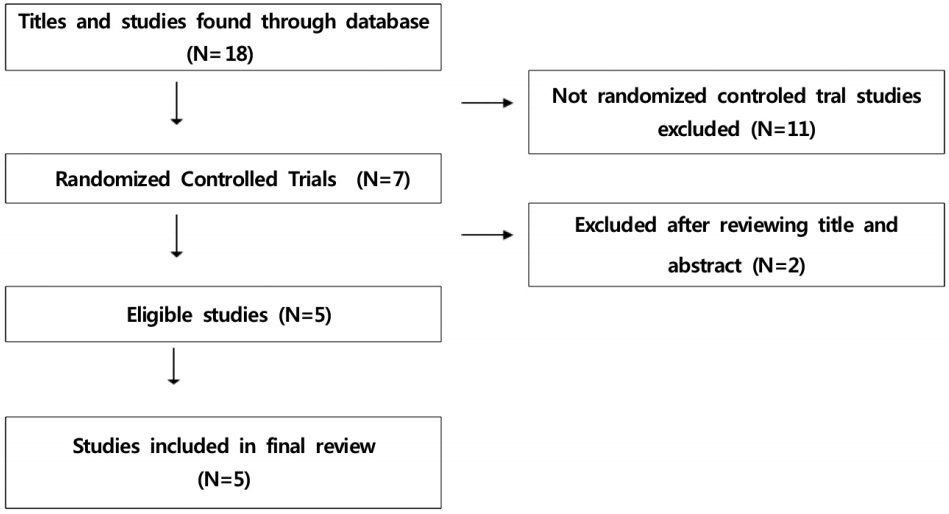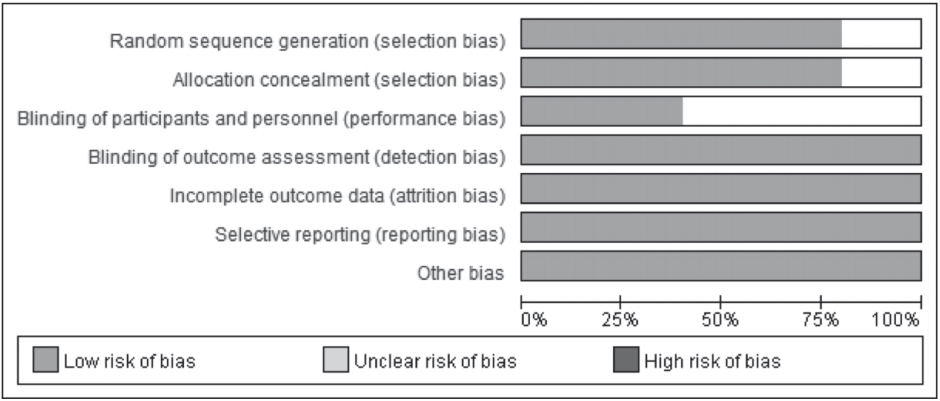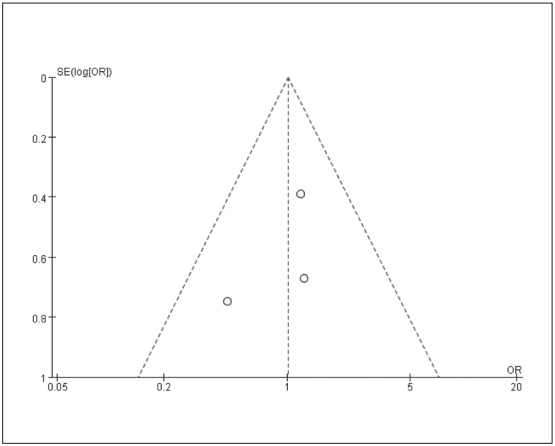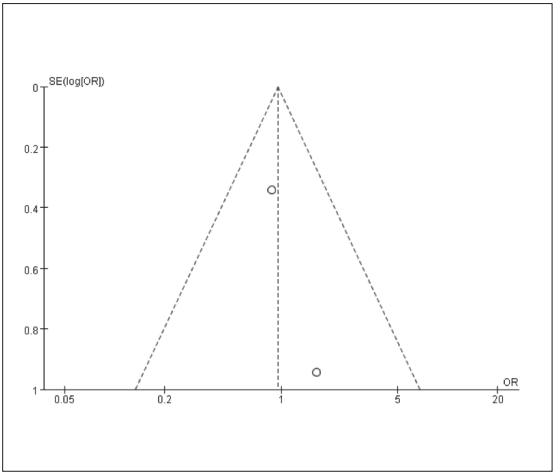Ⅰ. 서론
1. 연구의 필요성
의료 관련 감염은 기존 병원 감염의 용어가 변경된 것으로 각종 처치나 시술, 면역 기전 저하 등의 원인에 의하여 입원 중에 발생하는 감염을 의미한다. 이러한 의료기관 감염은 재원일수의 연장, 진료의 질 저하와 더불어 의료비의 상승을 유발하고 있다[1].
미국 질병 관리센터에서 중환자실 환자를 대상으로 한 조사에 의하면 의료 관련 감염의 발생율은 유치 도뇨관 관련 요로 감염, 인공호흡기 관련 폐렴의 순으로 높았으며, 국내에서도 중환자실을 대상으로 실시된 전국 규모의 조사 연구에서 요로 감염은 가장 많이 발생하는 다빈도 감염으로 조사되었다[2]. 우리나라의 요로감염은 도뇨관 삽입과 관련된 감염이 전체 요로 감염의 80%로 2008년 미국 질병통제센터에서 보고한 발생률 66-86%와 비슷한 수준이다. 따라서 요로감염을 예방하기 위해서는 도뇨관 관리가 우선되어야 한다[3].
유치도뇨관 삽입시 환자들의 요로감염을 예방하기 위한 간호 중재법 중 하나로 삽입 전 외요도구 소독이 추천되고 있다. 외요도구 소독은 외요도구 주위의 미생물의 성장을 막기 위하여 시행하는 것으로 이는 요도에서 분비되는 삼출물이 배지의 역할을 하는 것을 방지하고 분변균주의 침입을 저지하는 효과가 있어 요로감염 예방을 위한 가장 효과적인 방법 중의 하나로 알려져 있다[4]. 그러나 임상 현장에서 도뇨관 관리를 위해 도뇨관 삽입 전 사용하는 소독제는 각 기관별로 상이하며, 통일된 지침을 적용하고 있지 못하고 있는 실정이다. 이에 일반적으로는 소독제와 생리식염수를 동시에 사용하고 있다.
그러나 소독제는 그람 음성 및 양성균, 곰팡이, 바이러스 등에 살균 효과가 있으나 피부에 자극을 주어 과민반응을 일으킬 수 있고[5] 조직에 자극을 주기 때문에 깨끗한 상처나 점막에는 사용하기 어렵고[6], 요로 감염 감소에도 효과적이지 않다고 보고되고 있다. 더불어 최근 변화된 임상 간호지침에서도 회음부 간호 시 소독액의 사용 보다는 적절한 세척이나 멸균수 사용을 권장하고 있다[2,7]. 따라서, 본 연구에서는 체계적 문헌고찰을 통하여 도뇨관 삽입 전 물 또는 소독제 사용에 따른 요로감염 발생의 차이를 살펴, 도뇨관 삽입 전 요로감염 예방을 위한 중재연구의 방향을 제시하고자 한다.
Ⅱ. 연구방법
1. 연구설계
본 연구는 도뇨관을 시행하는 환자들에게 도뇨관 삽입 전 물을 사용하는 것과 소독제를 사용하는 것이 요로감염 발생에 미치는 효과를 검증하기 위하여 실험 연구들을 대상으로 메타분석을 실시한 체계적 문헌고찰 연구이다.
2. 문헌검색 전략
1) 핵심질문
체계적 문헌고찰을 위한 구체적 질문은 다음과 같다.
(1) 대상연구집단(Population): 도뇨관 삽입 환자
(2) 중재(Intervention): 도뇨관 삽입전 소독제재로 본 연구에서는 도뇨관 삽입 전 소독시 물(수돗물, 멸균수)을 사용한 중재
(3) 비교중재(Comparisons): 도뇨관 삽입전 소독제(Povidone-Iodine 또는 Chlorhexidine) 사용
(4) 중재결과(Outcomes): 요로감염
2) 문헌검색 및 선택과정
(1) 자료검색
자료검색은 2016년 11월 10일 이전까지 검색 가능한 문헌을 모두 포함하여 검색하였다. 문헌 검색을 위해 국외 데이터베이스인 Pubmed, Cochrane library 와 국내 데이터베이스인 국회도서관 국가과학기술정보센터, 한국교육학술정보원(www.riss4u.net). 학술데이터베이스(DBpia)를 이용하였으며 검색된 논문의 참고문헌을 통하여 관련 문헌을 추가로 검색하였다.
데이터베이스 검색 시 학술지에 게재된 실험연구 중, 영어 또는 한국어로 작성된 논문으로 제한하였다. 검색 시 키워드는 국외 데이터베이스 검색 시 중복되어 나타나는 것들이 주를 이루어 결과적으로 Pubmed를 중점으로 검색하였으며, 사용된 검색어는 Medical subject Heading을 이용하여 사용하였다.
검색식은 먼저 MeSH 용어와 text word를 AND/OR 및 절단 검색을 적절히 적용하였다. 먼저 중재방법으로 “povidone”, “povidone-iodine”“chlrorhexidine” 등의 용어를 사용한 경우 모두 추출 하였고 “water”와 비교한 경우를 추출하였다. 연구대상은 “urinary catheterization”, “catheter, indwelling, urinary catheter”으로 하였으며 중재 결과 “urinary tract infection”, “cross infection”, “catheter-related infection”, “bacteriuria”을 연구한 논문으로 검색하였다.
결론적으로 중재방법(water AND {“povidone or povidone-iodine or chlrorhexidine})과 연구대상(urinary catheterization or catheter, indwelling or urinary catheter), 중재결과(urinary tract infection or cross infection or catheter-related infection or bacteriuria)을 AND 조합으로 하여 검색하였다(Table 1). 국내 데이터베이스에서도 같은 방법으로 포비돈, 베타딘, 도뇨관, 클로르헥시딘, 요로감염으로 검색하였다.
(2) 자료수집과 선별절차
문헌의 선정기준은 다음과 같다.
① 도뇨관 삽입 한 환자를 대상으로 도뇨관 삽입 전 물과 소독제를 사용한 비교연구
② 무작위 대조군 실험연구(Randomized Controlled Trials, RCTs)
제외기준은 다음과 같다.
① 도뇨관 삽입 전이 아닌 삽입 후 daily care 와 관련된 연구
② Cental catheter와 관련된 연구
③ 한국어나 영어로 출판되지 않은 연구
본 연구는 검색된 자료를 핵심질문과 선정, 배제기준을 바탕으로 선정하였으며, 단계별 문헌선택 과정 현황을 자세히 기술하기 위하여 PRISMA의 흐름도를 사용하였다.
검색결과 총 18편의 논문이 검색되었고, RCT가 아닌 논문을 제외한 7편의 논문을 대상으로 핵심질문, 자료선정 및 제외 기준에 따라 2명의 연구자가 제목과 초록을 중심으로 검토하였다. 그 결과 핵심질문과 관계없는 연구 2편을 제외 총 5편을 선별하였다(Figure 1).
3. 문헌의 질평가
문헌의 질은 Cochrane’s Risk of Bias 도구를 사용하여 평가하였다. 이는 무작위 대조군 실험연구에 대한 질 평가 방법으로 무작위 배정순서 생성, 배정순서 은폐, 참여자와 연구자 눈가림, 결과평가자의 눈가림, 불완전한 결과의 처리, 선택적 결과보고, 기타 타당도를 위협하는 잠재적 편중위험의 7가지 영역을 평가하는 문항으로 이루어져 있다. 또한 각 문항은 문헌에 기술된 내용에 따라 편중(bias)의 위험이 높음, 낮음, 불명확의 3가지 수준으로 판정된다. 문헌의 질 평가과정은 2명의 연구자에 의해 수행되었으며 의견의 불일치가 있는 경우에는 논의 및 제3자 개입의 원칙을 정하였으나 연구자간 이견은 없었다.
질평가 결과 4개 문헌은 7영역 중 6가지 이상을 모두 충족하는 고품질의 문헌이었으며, 1개 문헌도 5영역을 충족하는 문헌으로 평가되었다(Figure 2).
4. 자료분석방법
자료 분석은 우선 근거표 기본서식을 작성하여 시범적으로 서식적절성을 검토한 후 사용하였다. 근거표는 문헌에 기술된 결과를 정확히 기술하기 위해 연구자별 독립적으로 작성한 후 그 결과를 서로 교차 확인하였다. 근거표에 연구 설계, 대상자 수와 각 연구의 연구대상 선택기준과 배제기준, 연령, 추적관찰기간, 중재내용과 결과 변수를 추출하여 기술하였고, 이 과정은 3차례 반복되었다.
최종 선정된 5편의 문헌으로부터 물과 소독제 사용 시 요로감염 발생 건수를 추출하고 이에 대한 메타분석을 실시하였다. 메타분석은 Cochrane Review Manager software Version 5.3 (RevMan)을 이용하였으며, 결과변수가 이분형 변수이므로 효과추정치는 교차비로 기술하였고 평균효과와 95% 신뢰구간은 멘텔-헨젤방법을 사용한 고정효과모형으로 분석하였다. 통계적 이질성은 숲그림을 통해 신뢰구간 및 효과추정치에 공통적인 부분이 있는지 시각적으로 확인하였고, 유의수준 5% 미만으로 하여 Higgins의 I2를 통해 정량적으로 확인하였다. I2 값은 0%에서 100%사이의 값을 가지며 연구들 간에 관찰되는 이질성이 없을 때 0%가 되고, 50%를 초과하는 경우 이질성이 있다고 판단하였다. 출판편중은 funnel plot으로 평가하였다.
Ⅲ. 연구결과
1. 선정된 문헌의 일반적 특성
도뇨관 삽입전 물과 소독제의 사용과 요로감염의 발생률 차이에 대한 근거평가에 선택된 문헌은 총 5편으로 모두 RCTs였다. 출판년도는 2001년부터 2013년까지였으며, 모두 학술지에 게재된 논문으로 캐나다, 오스트레일리아, 이란, 홍콩, 터키 각각 1편씩으로 다양한 나라에서 출판된 논문이었다. 대상자는 도뇨관 삽입이 필요한 환자로 연령은 12개월 미만부터 78.4세까지 다양하였다[6,8]. 연구대상자 수는 최소 20명[9]에서 최대 436명[6] 이었다. 대상자들의 나이나 성별 등 인구학적 특성과 임상적 특성에 있어서는 모두 유의한 차이가 없는 것으로 나타났다(Table 2).
2. 분석대상 연구의 중재방법과 중재값
연구대상은 인공도뇨를 시행하는 환자였으며 단순도뇨[8]와 유치도뇨[6,9-11]를 모두 포함하였다. 그 결과 단순도뇨를 다룬 논문 한 편과 유치도뇨를 다룬 논문 네 편을 선정하였다.
실험군 소독방법으로 수돗물을 사용한 논문이 두 편[9,10], 멸균수를 사용한 논문이 세 편[6,8,11]이었다. 대조군의 소독 방법으로 povidone[8,10]또는 chlorhexidine[9,10]을 사용한 논문이 각각 두 편이었으며 povidone과 chlorhexidine을 각각 사용하여 세가지를 모두 비교한 논문[12]이 한편이었다.
요로감염은 소변 집락균의 개체수와 함께, 요로감염 관련 증상이 발현될 때 요로감염으로 정의한다. 선정된 각각의 논문에서 요로감염의 정의는 5편의 논문마다 조금씩 차이가 있었다. Nasiriani 등[10]의 연구에서는 mL당 >10³ CFU의 균이 자랄 때를 세균뇨로, >10⁵ CFU 균이 동정 되는 경우 요로감염으로 각각 정의하였다. Düzkaya 등[11]의 연구에서는 mL당 ≦10⁴ CFU의 세균이 동정되는 경우 오염된 것으로, mL당 >10⁵ CFU의 세균이 동정되면서 동시에 고열이나 치골상부의 팽만이 동반되는 경우를 요로감염으로 정의하였다. Cheung 등[6]의 연구에서는 mL당 〉10⁵ CFU의 균이 동정되는 경우 세균뇨로 정의하면서, 고열, 빈뇨, 핍뇨, 긴박뇨, 혈뇨, 요통 등의 증상이 동반되는 경우를 요로감염으로 정의하였다. Webster 등[9]의 연구에서는 L당 ≧10⁶ CFU의 균이 동정되는 경우를 요로감염으로 정의하였다. Al-Farsi 등[8]의 연구에서는 1개 내지 2개의 균이 mL당 〉50x10³ CFU 동정되는 경우와 1개의 균이 10~49x10³ CFU 동정되는 경우를 요로감염의 가능성이 높은 것으로 정의하였으며, 〈10x10³ CFU 에 해당하거나 혼합된 균이 자라는 경우는 요로감염의 가능성이 떨어지는 것으로 판단하였다.
요로감염을 시사하는 균은 Escherichia coli, Klebsillela, Enterobacter, Enterococcus, Proteus, Pseudomonas로 보았다. 5편의 논문을 살펴 보았을때 요로감염 진단 시 동정되는 균은 각 논문마다 상이하였으나 Escherichia coli가 가장 많았으며, Staphylococcus와 Klebsiella, Enterococcus, Streptococcus가 그 뒤를 이었다. 요로감염을 의미하는 균종은 그룹별 차이가 없었다.
요로감염 발생율은 0%에서 20%까지 다양하게 나타났으며 요로감염 발생율이 0%인 경우 세균뇨 발생율로 결과를 대체하여 소독제의 효과를 비교하였다(Table 3).
3. 도뇨관 삽입 전 물과 소독제 사용의 효과 비교
1) 도뇨관 삽입전 물과 povidone-iodine 사용의 요로감염 발생비교
전체 분석대상 연구 5편 중, 도뇨관 삽입전 물과 povidone-iodine 사용의 효과비교에 대한 평가를 위해 분석된 3편의 문헌을 통합한 결과 대상자 수는 물을 적용한 실험군이 162명, 적용하지 않은 대조군이 164명이었다. 요로감염 발생은 실험군에서 26명, 대조군에서 26명이었다. 메타분석 결과 물을 적용한 대상자는 povidone-iodine 사용한 대조군 두 군간 효과의 크기는 통계적으로 유의한 차이를 보이지 않았고(Z=0.05, p=.96) 문헌들 간의 이질성은 없는 것으로 나타났다(I2=0%, p=.50)(Figure 3).
2) 도뇨관 삽입전 물과 chlorhexidine 사용의 요로감염 발생비교
전체 분석대상 연구 5편 중, 도뇨관 삽입전 물과 chlorhexidine 사용의 효과비교에 대한 평가를 위해 분석된 3편의 문헌을 통합한 결과 대상자 수는 물을 적용한 실험군이 267명, 적용하지 않은 대조군이 271명이었다. 요로감염 발생은 실험군에서 21명, 대조군에서 22명이었다. 메타분석 결과 물을 적용한 대상자는 chlorhexidine을 사용한 대조군 두 군간 효과의 크기는 통계적으로 유의한 차이를 보이지 않았고(Z=0.17, p=.87) 문헌들 간의 이질성은 없는 것으로 나타났다(I2=0%, p=.54)(Figure 4).
Ⅳ. 고찰
본 연구는 도뇨관 삽입 전 물과 소독제의 사용에 따른 요로감염 발생률과 그 효과의 차이를 확인하기 위해 시행되었다. 이를 위하여 총 5편의 연구를 토대로 연구대상자의 특성과 소독방법에 따른 요로감염 발생률에 대하여 체계적으로 고찰 한 후 메타분석을 통해 도뇨관 삽입 전 물과 소독제 사용에 따른 요로감염 발생률의 차이를 확인하였다. 효과에 대한 신뢰성 높은 결과를 얻기 위하여 근거의 강도가 가장 높은 RCTs을 분석대상으로 하였다.
분석된 5편의 논문의 발행연도는 2000년부터 2013년까지의 연구였으며 연구자의 국적은 캐나다, 오스트레일리아, 이란, 홍콩, 터키로 모두 국외 논문이었고 국내에서 이 분야에 대한 연구는 찾아보기 어려워 이 분야에 대한 국내 연구가 매우 부족한 실정임을 알 수 있었다.
분석에 포함된 총 5편의 논문에서 요로감염은 소변 집락균의 수에 기본을 두며, 요로감염에 타당한 증상이 발현될 때 요로감염으로 정의하였으나 각 논문마다 조금씩 차이는 있었다. 연구대상의 연령은 12개월 미만에서 평균 78.4세로 다양한 연령대였고 소아중환자실 재원 환자나 소아 응급실을 방문하는 환자를 대상으로한 연구에서 유치도뇨관의 주기적인 교환이 필요한 가정간호를 받는 환자까지 다양한 대상자를 포함하였고 단순도뇨와 유치도뇨를 포함하였다.
본 연구에 사용한 소독제는 povidone-iodine과 chlorhexidine 두 종류였으며 물과 povidine- iodine, 물과 chlorhexidine으로 나누어 분석하였다. 메타분석 결과를 살펴보면 물을 적용한 대상자와 povidone-iodine 사용한 대조군 두 군간 효과의 크기는 통계적으로 유의한 차이를 보이지 않았고(Z=0.05, p=.96) 문헌들 간의 이질성은 없는 것으로 나타났다(I2=0%, p=.50). 또한 물과 chlorhexidine을 비교 하였을 때도 물을 적용한 대상자는 chlorhexidine을 사용한 대조군 두 군간 효과의 크기는 통계적으로 유의한 차이를 보이지 않았고(Z=0.17, p=.87) 문헌들 간의 이질성은 없는 것으로 나타났다(I2=0%, p=.54).
Carapeti 등[12]의 연구에서는 철저한 무균법을 적용한 그룹에 비해 물로만 씻은 그룹이 요로감염발생에 있어 통계적으로 유의한 차이를 보이지 않았고 비용절감에 훨씬 이득이었다고 하였으며, Schiøtz[13]의 연구에서도 도뇨관 삽입 시 윤활제로서 소독젤을 사용 한 군과 그렇지 않은 군에서 요로감염 발생률에 차이가 없어 본 연구와 유사한 결과를 보였다. Lee[14]도 요도입구를 소독하는 것은 이론적으로 관외 경로의 세균 침입을 막음으로서 요로 감염을 예방할 수 있는 것처럼 보이지만 항생제 연관 요로감염을 줄여주지는 못하며 연구에 따라서는 오히려 발생율을 증가시키는 경우도 있다고 하였다[15].
또한 Povidone-iodine은 그람 음성 및 양성균, 곰팡이, 바이러스등에 살균 효과가 있으나 피부에 자극을 주어 과민반응을 일으킬 수 있고[5] 조직에 자극을 주기 때문에 깨끗한 상처나 점막에는 사용하기 어렵다고 보고되고 있고[16,17], chlorhexidine은 미생물의 세포막을 파괴시켜 세포내 물질이 침전되도록 하여 살균효과를 보이는 소독제로 지속효과는 우수하나 점막에 사용 시 희석 농도가 부정확하다고 하였다[4]. 더불어 최근 변화된 회음부 간호지침에서도 부작용이 있는 소독액 사용 보다는 적절한 세척이나 멸균수 사용을 권장하고 있다[2,7].
본 연구에서 소변에서 검출된 병원균은 대부분 Escherichia coli, staphylococcus, klebsiella, enterococcus등 단일 병원균으로 물과 소독제 그룹들 사이에서 유사하게 나타났으며, 이는 소독제를 사용하는 방법이 물을 사용하는 방법에 비해 우월하다는 것을 보여주기 힘든 결과이다.
이상을 통해 물이 다른 소독제들과 비슷한 효과를 가지므로 도뇨관 삽입전 소독제의 사용대신 물을 사용하는 것이 요로감염의 발생률을 높이지 않으며 피부에 민감성을 일으키지 않으면서 간호현장에서 적용 가능한 중재라는 근거를 확인할 수 있었다.
본 연구는 몇가지 제한점을 가지고 수행되었다.
첫째, 본 연구에 도뇨관 삽입 전 수돗물을 사용하는 논문을 포함하였다는 것으로, 실제 국내에서는 도뇨관 사용 시 모든 물품은 멸균된 것으로 사용하고 있어 수돗물을 사용하는 것이 어려워 보였다. 그러나 Webster 등[9]은 멸균수는 항균 효과가 없으며, 회음부는 무균적이지 않고, 수돗물은 부작용 없이 흔히 세척에 이용하며 멸균수보다 수돗물 사용이 경제적 이익이 크다는 이유로 수돗물 사용을 지향했고 연구의 결과도 요로감염의 발생율이 다르지 않았기에 수돗물을 사용한 논문까지 포함하게 되었다. 그러나 수돗물을 사용한 두 편의 논문[9,10]을 보면 수돗물 사용에 대한 방법이 구체적으로 언급되지 않았으며, 5편의 논문 중 소독방법과 절차에 대해 구체적으로 언급한 논문은 두 편[8,11]에 불과 하여 실제 임상 적용 시 구체적인 방법론에 대한 표준지침이 필요할 것이라 사료된다.
둘째, 단순도뇨와 유치도뇨 두가지 모두 포함시켰다는 것이다. 단순도뇨와 유치도뇨는 적응증에 있어 차이가 있고, 도뇨 거치 기간에 차이가 있다. 도뇨관의 거치기간은 요로 감염 발생율과 가장 연관이 높은 요인이고[17] 질병관리 본부의 연구에서도[19] 요로 감염 발생율을 줄이기 위해 가급적 빨리 유치도뇨관을 제거할 것을 권고하고 있어 거치기간이 상이한 단순도뇨를 대상 논문에 포함시킨것은 제한점이 있으나, 본 논문의 목적이 거치 기간에 있지 않고 회음부 소독방법에 있으므로 단순도뇨의 회음부 소독 방법에 따른 요로감염의 발생율의 차이를 보는 것은 의미가 있다고 생각하였다.
셋째, 본 연구에 포함된 논문의 소변배양 검사 시기와 기간에 차이가 있다는 점이다. 실제로 선택된 논문 5편의 요로감염발생률은 요로감염이 발생하지 않은 연구[10]에서 18% 요로감염이 발생한 연구[8]까지 다양하게 나타났으며 추후 동일한 소변 배양시기와 기간에 따른 많은 연구가 진행되어야 할 것이라 생각된다.
이러한 제한점을 가지고 있음에도 불구하고 본 연구 결과를 통하여 도뇨관 삽입 전 물을 사용하는 것은 소독제 사용과 비교하여 요로감염 발생률에 있어 통계적으로 유의한 차이가 없음에 주목할 만하며 이는 물의 사용이 비용 효과적이고, 안전한 방법으로 피부의 민감성을 일으키지 않고 간호현장에서 적용 가능한 중재라는 근거를 확인할 수 있다. 그러나 Webster 등[9]의 연구에서 몇몇 간호사들이 수돗물로 세척하는 것이 잘못된 행위라고 판단하여 연구 참여를 거부하였던 사례에서 알 수 있듯이 기존에 적용중인 간호술기를 변경하는 것은 충분히 객관적인 연구 결과는 물론, 인식의 변화까지 동반되어야만 가능한 것으로 표준화된 소독 방법과 절차에 따른 동일한 프로토콜의 적용과 동일한 소독제의 사용에 따른 비교, 멸균과 비멸균 물을 비교 등 표준화된 프로그램을 적용하여 그 효과를 입증하는 더 많은 무작위 대조군 실험연구와 이를 통한 체계적 고찰이 필요할 것으로 생각된다.
V. 결론
도뇨관 삽입 시 환자들의 요로감염을 예방하기 위한 간호 중재법 중 하나로 삽입 전 외요도구 소독이 추천되고 있으며, 대부분의 병원에서 소독제를 사용하여 외요도구를 소독하고 있다. 하지만 소독제 사용으로 인해 환자들의 피부점막을 자극시키고, 그로 인한 불편감을 호소하고 있는 실정이다. 또한 소독제 사용으로 인해 의료비용을 상승시키는 요인이 되고 있다.
본 연구는 도뇨관 삽입전 물과 소독제 사용을 비교한 5편의 무작위 대조군 실험연구들의 체계적 문헌 고찰을 통해 물과 소독제 사용이 요로감염 발생에 미치는 효과를 살펴보았다. 그 결과 물사용은 소독제 사용과 비교하여 요로감염 발생에 통계적으로 유의한 차이를 보이지 않는 것으로 나타나 도뇨관 삽입 전 물을 사용하여 세척하는 것은 소독제 사용으로 인한 환자의 불편감을 감소시키고, 안전하고 비용 효과적으로 활용될 수 있는 간호중재라는 근거를 확인할 수 있었다.
이러한 결과는 기존에 소독제 및 소독 방법에만 집착하여 도뇨관 삽입 전에 행해지던 간호실무에 대해 도뇨관 삽입 시 물 적용에 대한 가능성을 확인하고, 실무 적용시 간호중재의 변화를 가져올 수 있는 획기적인 결과물로 기대된다. 최근의 도뇨관 삽입과 관련된 연구를 살펴보면 도뇨관 관리 방법이나 유치도뇨 환자의 회음부 관리방법에 대한 연구는 이루어지고 있으나 실제 임상에서 도뇨관 삽입 시 물과 소독제 사용에 대한 연구는 거의 이루어지고 있지 않고 있으며 국내 문헌은 전무한 실정이므로 도뇨관 삽입전 물과 소독제 사용을 비교하는 국내 연구를 제언한다. 또한, 선정된 논문의 대상 연령, 요로감염의 정의, 도뇨관 삽입 시점, 소변 채집 시기가 상이하고 소독방법도 상이하였으므로 물을 사용한 표준화된 소독 방법을 적용한 연구를 통하여 물 사용이 도뇨관 삽입 간호 시 충분히 효과적인 중재임을 입증 할 수 있는 반복 연구를 제언한다.














